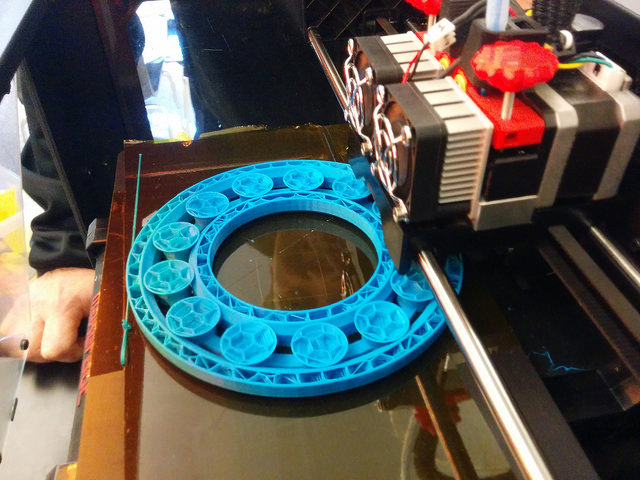
Report: U.S. research funding lags behind international competitors.
The outsourcing of manufacturing over the past decade has not only led to millions of lost jobs, it also is putting American innovation at risk — and America is not doing enough to compete.
That’s one of the findings from a new report issued by the National Academies of Sciences, Engineering, and Medicine that presents highlights of a May 2017 workshop on the future of Manufacturing USA.
Manufacturing USA, which began in 2012 and was officially established with bipartisan-backing by the Revitalize American Manufacturing and Innovation Act of 2014, is a network of research institutes designed to boost manufacturing-based innovation. It’s one of the major manufacturing-focused accomplishments of the Obama administration, with institute researchers now working on everything from 3D printing (at the National Additive Manufacturing Innovation Institute in Youngstown, Ohio) to creating technologies to develop cells, tissues and organs (at the Advanced Regenerative Manufacturing Institute in New Hampshire).
But it might not be enough.
“If we’re going to have a shot at being truly competitive in this next century, we need to further up our game,” said Sen. Christopher Coons (D-Del.), at the Capitol Hill event unveiling the report. “We need to recognize that China’s already committed to 40 manufacturing innovation centers, to investing $2 billion in their advanced manufacturing network. We need to see that, raise it, and meet it.”
A thriving manufacturing industry is essential to America’s vitality — when manufacturing centers die, not only does the local community suffer, but all the systems that indirectly rely upon manufacturing do as well.
We’ve seen this happen in recent years. Between 2000 and 2010, a third of manufacturing jobs in the United States were eliminated, decimating the communities that had grown around these employment opportunities. The United States has only recovered about 900,000 manufacturing jobs since then, and the consequences of a diminished manufacturing industry in America are far-reaching.
"If we’re going to have a shot at being truly competitive in this next century, we need to further up our game." Sen. Chris Coons (D-DE)
Too often we dissociate manufacturing from innovation, believing that factory closures do not threaten our ability to produce cutting-edge technology. Yet, historically, manufacturing has fueled advances in technology by offering affordable production opportunities and employment for scientists, engineers, and technicians. And as one workshop participant noted, when America offshores its manufacturing, “U.S. firms can become dependent on this system of production and cancel work on needed innovations in the product line.”
Meanwhile, the United States is increasingly in danger of falling permanently behind while China and Germany invest heavily to support advanced manufacturing research and development as a means of nurturing innovation.
Germany provides €2.1 billion annually to fund advanced manufacturing research at its 69 Fraunhofer Society institutes and research units. Initiated in 2015, China’s Made in China 2025 program follows Germany’s model, establishing advanced manufacturing as China’s funding priority and promoting innovation by upgrading its manufacturing.
Manufacturing USA was designed to close that gap and re-establish America as a global leader in advanced manufacturing. Developed as a public-private partnership with federal funding that disseminates knowledge through institutes nationwide, Manufacturing USA institutes are comprised of industry, academic, and federal members who share best practices, offer workforce training, and provide access to cutting-edge manufacturing processes.
In 2012 Manufacturing USA launched its pilot program, America Makes, at the National Additive Manufacturing Innovation Institute in Youngstown. This program has grown to include the 40 member companies, nine universities, five community colleges, and 11 non-profit organizations. Today, Manufacturing USA encompasses 13 additional institutes across the country.
These efforts are critical to America’s future as a global leader. But workshop participants warned that much more needed to be done to ensure Manufacturing USA succeeds in its mission, including through better coordination between the various institutes and more secure funding streams. Meanwhile, policymakers themselves must also act; one workshop participant noted that “Germany’s leadership in advanced exports and manufacturing employment demonstrates the positive impact of sustained policy attention to manufacturing.”
“There are a lot of folks here who believe that manufacturing is dead and gone from the United States and will not come back. There is a striking predominance of that view among my colleagues, said Sen. Coons. “There are many who think that we’re just talking about automobiles or we’re just talking about 20th century technologies. … It is far from over.”
